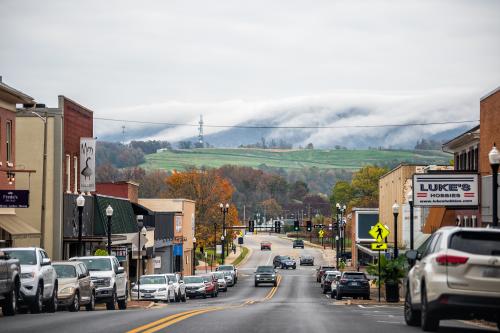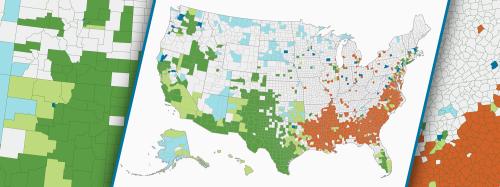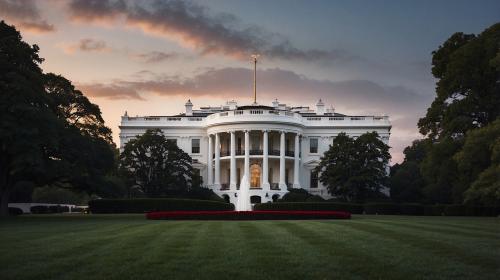The release of 2020 Census population data provided much-anticipated insight into the demographic trends reshaping our nation, but it also unleashed a wave of predictable headlines touting the demise of “shrinking rural America.” The familiar narrative of “two Americas”—one diverse, metropolitan, and successful and one white, rural, and declining—cropped up once more, often explicitly equating “rural” with “white” or, even more simplistically, with white Trump voters.
While this narrative provides an easy way to think about America in binary terms, it obscures the far more complicated trends shaping rural America: most notably, its growing demographic diversity over the last decade. While it is true that the population of nonmetropolitan[1] America fell by about half a percentage point between 2010 and 2020, the future of rural America is increasingly marked by growing diversity and expanding inequity within and across regions—creating an intricate picture that binary thinking can’t capture.
Here, we present three demographic trends from the 2020 Census that upend outdated assumptions about nonmetropolitan America and conclude with a call to embrace a more inclusive future for increasingly diverse and dynamic rural towns and regions.
1. Rural America became more racially and ethnically diverse over the last decade
Contrary to the dominant narratives that use “rural” as a synonym for “white,” 24% of rural Americans were people of color in 2020.[2] While rural America is still less diverse than the nation as a whole (42.2% people of color), it is diversifying as well: The median rural county saw its population of color increase by 3.5 percentage points between 2010 and 2020 (Figure 1).

Moreover, demographic diversity in rural America varies considerably from place to place: In 2020, two-thirds of rural counties consisted of at least 10% people of color, one-third were over a quarter people of color and 10% of rural counties are majority people of color (Figure 2).
Narratives that erase the 24% of rural Americans who are people of color—as well as the many rural counties that are majority people of color—devalue the needs of rural people of color who face systemic barriers to opportunity, especially in light of the COVID-19 pandemic, while giving rhetorical priority to the concerns of an imagined white rural monolith.
2. The distribution of people of color in rural America is complex and highly regionalized
The makeup of rural populations of color is shaped by highly regionalized variations in the concentration of Black Americans, Latino Americans, and Indigenous Americans across the nation. As Figure 2 demonstrates, rural counties in the South and West are particularly racially and ethnically diverse—with a substantial number of rural areas in these regions majority or near-majority people of color.

Black people are the largest population of color in almost all of the rural lowland South, where legacies of slavery and Jim Crow have had a lasting effect on economic mobility and poverty. Indigenous groups are the largest population of color in rural areas in eastern Oklahoma, the Four Corners area, much of the northern tier of the Great Plains, and in most of Alaska and have been found to have lower educational attainment, higher poverty rates, lower household incomes, and lower occupational attainment compared to Indigenous groups who live in metropolitan areas. Asian Americans are the largest population of color in rural Hawaii and in Kodiak Island Borough and the West Aleutians Census Area in Alaska. The large Asian American populations in these parts of rural Alaska largely consists of Filipino American communities that originally formed around jobs in the fishing and canning industries.
This regional variation also has political ramifications. As researchers at the Economic Innovation Group pointed out last fall, Trump won only three majority-Black rural counties in the U.S. and fared poorly among rural workers employed in the leisure and hospitality sectors, particularly in the rural West. Rural counties with recreation-focused economies were also more likely to gain population over the last decade, meaning the future of rural America is not only increasingly diverse, but not as conservative as many assume.
3. Latino populations continued to drive diversity in rural America
When examining changes in the rural Latino, Black, and Indigenous populations in America over the last decade, it becomes clear that expanding diversity is largely driven by growth in the rural Latino population.
As Figure 3 demonstrates, the rural Black population has stayed relatively constant in most of the United States, though it is decreasing as a fraction of the population in the Black Belt and increasing in areas that have seen rapid population growth in recent years, such as the shale gas fields of western North Dakota.

Figure 4 reveals that while the Indigenous fraction of the rural population rose in most areas that already had large Indigenous populations, it fell in the area of the shale gas boom in western North Dakota, presumably due to this area’s large influx of people from other parts of the country over the past decade.

Finally, Figure 5 reveals how the rural Latino and Hispanic population has grown rapidly along the Pacific Coast and in the oil and gas-rich areas of the High Plains, as well as in a scattering of counties further east. In fact, population gains in many rural areas were driven solely by increases in Latino residents—many of whom immigrated to work in meatpacking plants, farms, or industries like construction, oil, and timber, or to start businesses. However, there is substantial variation in patterns of Latino population change in rural America—with Latinos providing a “demographic lifeline” in some rural regions, while falling in relative terms in a few of the areas where their population has historically been largest (such as northern New Mexico and the Rio Grande Valley of Texas).

The future of rural America requires policy choices that value its increasingly diverse population
While patterns of demographic change in rural America are complex and regionalized, the key takeaway is clear: The future of rural America is increasingly marked by demographic, regional, and economic diversity. In the last decade, rural population growth was driven by people of color (particularly Latinos) and by recreation-focused rural counties.
These patterns underscore the need to reject the idea of one-size-fits-all policies and programs for rural America and to acknowledge the importance of nurturing diverse, dynamic, and connected rural communities. Our colleagues at Brookings, as well as researchers at the Center for American Progress, have urged the federal government to support these aims by investing in grassroots strategies to bolster local assets and nurture racial and economic justice.
At the community-level, this means that rural local leaders must embrace intentional strategies to nurture demographic diversity and dynamic local economies—with our research demonstrating that many of them already are doing so by supporting clusters of locally owned small businesses that build community wealth, implementing built environment and quality-of-life improvements for vulnerable residents, strengthening social cohesion between neighbors, and nurturing new community-led structures to build capacity and advance community priorities.
Rural areas account for over 70% of our nation’s land. Rather than trying to pigeonhole them into an antiquated framework, our policies must value the diversity that is both their present and future.
Notes
[1] In this post, we define “rural” counties as those not located in a Metropolitan Statistical Area (MSA). However, we recognize that there is no simple rural-urban dichotomy, nor are such dichotomies necessarily useful—as nonmetropolitan classifications shift over time with population changes, may fail to capture cultural understandings of “rural” that do not reflect demographic data, and may serve to obscure the interconnected nature of rural-urban interdependence in today’s economy.
[2] In this post, we define “people of color” as anyone who reports their race as other than “white only” or who identifies their ethnicity as “Hispanic or Latino” on the Census. We use “Indigenous peoples” to refer to people who report their race as “American Indian or Alaskan Native only” or “Native Hawaiian or Pacific Islander only” and do not identify their ethnicity as “Hispanic or Latino” on the Census. We use “Black” and “Asian-American” to refer to people who identify their race as “Black or African-American only” and “Asian only,” respectively, and “Latino or Hispanic” to refer to people who report an ethnicity of “Hispanic or Latino,” regardless of race. While this is an oversimplification of race and ethnicity in the United States, we used these categories as a way of approximating broad trends in population distributions.








Commentary
Mapping rural America’s diversity and demographic change
September 28, 2021